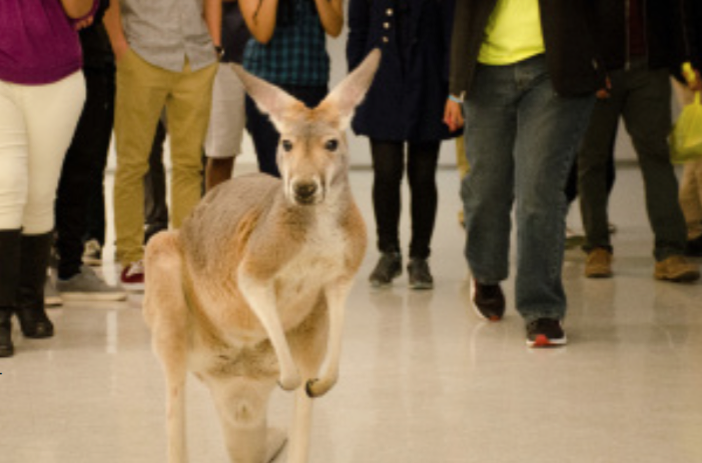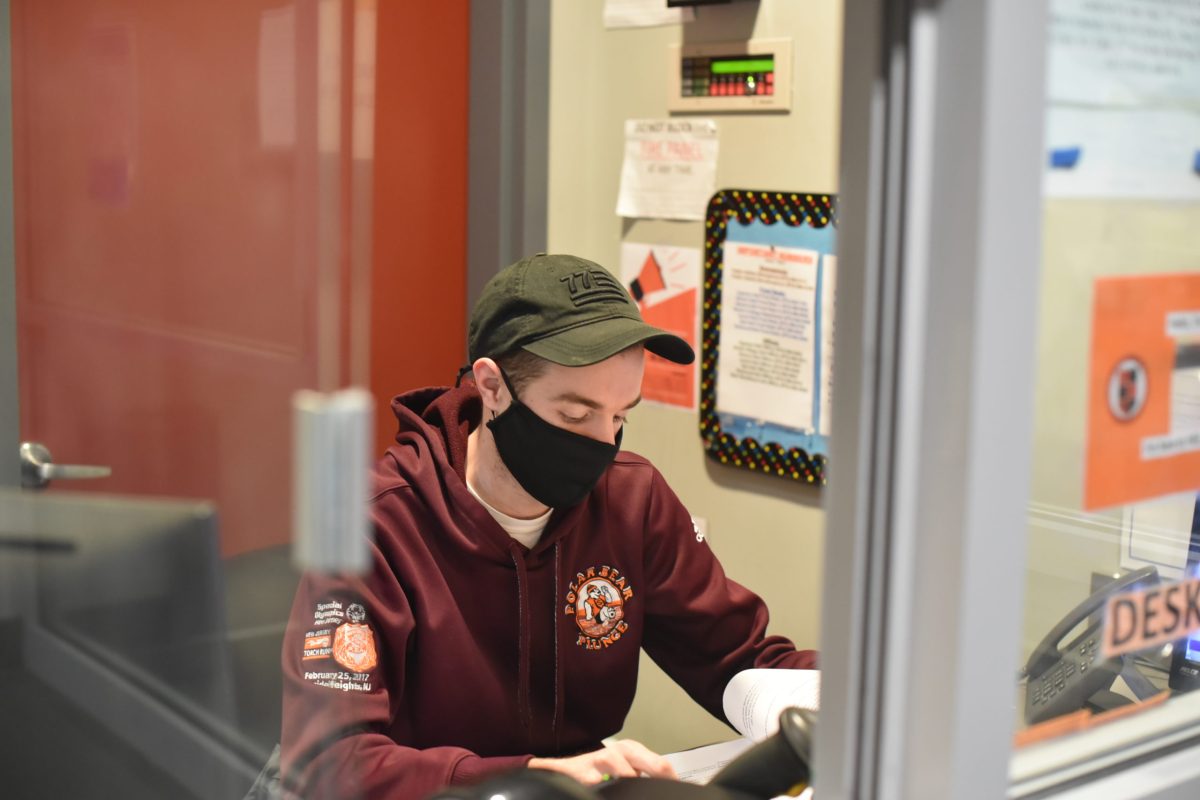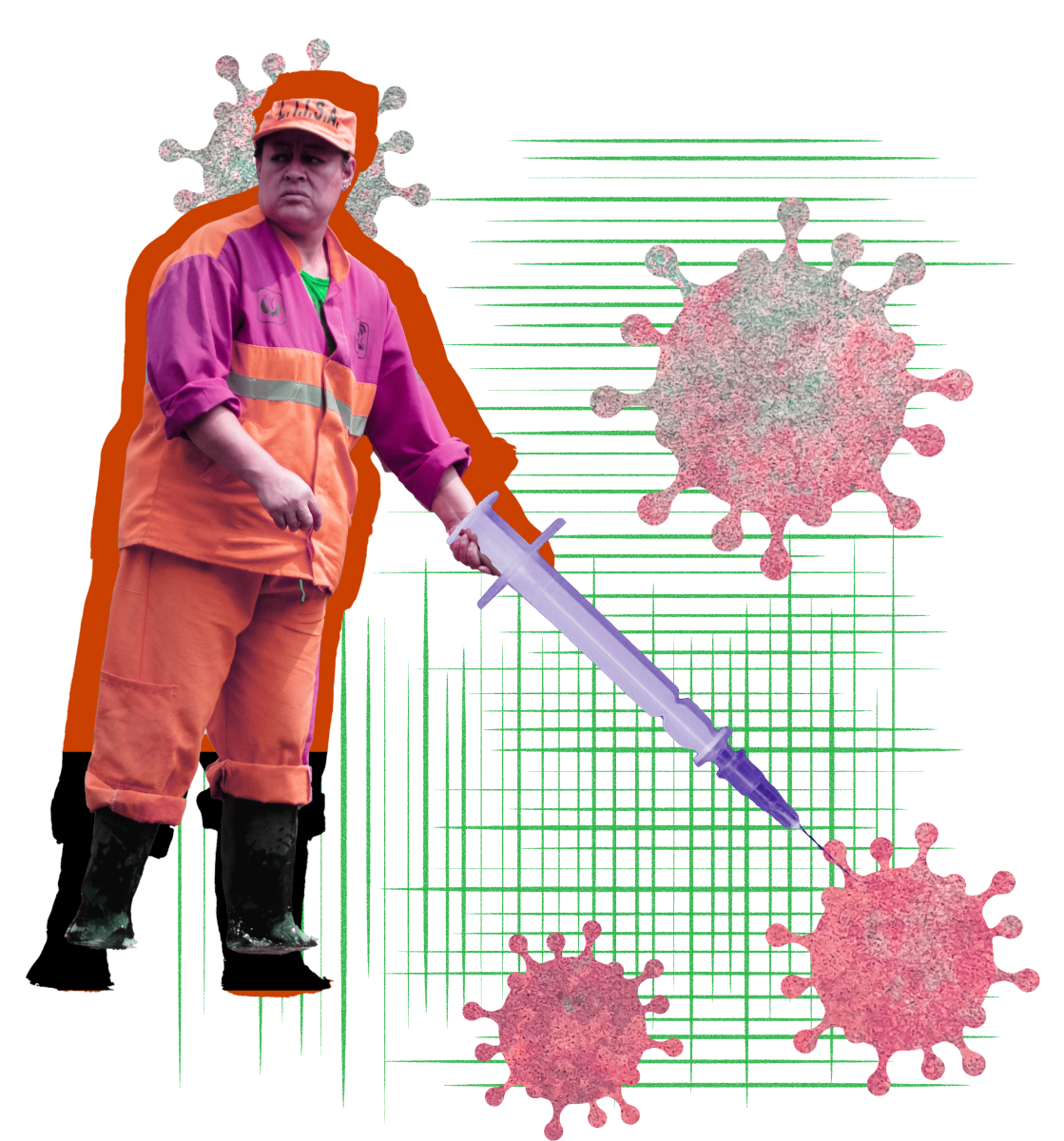Zoologist Creates Coolest petting Zoo Ever
By: Colin Bayne, contributing writer
On April 7, Dr. Ed Laquidara, a scientist with a doctorate in zoology, came to NJIT to share with students the wonders and joy of various animals in the world. He has a particular expertise in Crocodilian Biology, and after having many years of field experience, became the curator of Animal Adventures, a rescue shelter for exotic animals. Its goal is to “rescue, feed and shelter exotic animals as well as educate people about the exotic animal world along with a large variety of other topics.”
Dr. Laquidara gives many educational talks around the country, and has experience with an extremely diverse number of exotic species. He showcased ten of them at his event, ranging from small to large and reptilian to mammalian.
He started off small, showing off the Florida King Snake. A small yellow and black snake, it coiled around his fingers with its tongue flicking in and out while he talked about it. He explained that they are harmless to humans, as their teeth are tiny and not poisonous. However, they are known as the king of snakes because their favorite food is snakes. They love snakes so much that they are even known to eat their own tails in a rather macabre case of mistaken identity. After passing him around and allowing everyone to feel the scaly animal, the sinuous serpent was returned to its cage.
Dr. Laquidara then brought out a little black puffball called a Chinchilla. Native to South America, these rodents might have the softest fur of any animal, with very expressive whiskers which they use to sense their environment. Apparently, these whiskers are about as sensitive as a human finger, and they wiggle whenever the chinchilla moves. After giving everyone the chance to pet the little rodent, Dr. Laquidara put him away and produced another scaly creature: the Blue-Tongued Skink.
Native to Australia, these lizards live in all kinds of environments, eating rodents, insects, birds, and berries. Like most lizards, their tails will regenerate if torn off, and their hearing is just as good as our own. Due to their relatively harmless nature, these blue-tongued lizards are well-liked in Australia, as they are a great help in reducing the number of rats and mice running rampant. After the brown scaly beast was put away Dr. Laquidara produced an unusual mammal: the Kinkajou.
A tree-dwelling rodent native to South and Central America, this long brown-colored creature wrapped its tail around Dr. Laquidara’s neck as he talked. They live in the rain forest, and are extremely nocturnal, so this particular one was very sleepy, and kept absently biting his paw in much the same way that infants suck their thumbs.
Next, he brought out an African Pale Fox named Storm, who was small and grey, with large perky ears. Hailing from Africa, this relative of the Fennec fox lives in the savannahs and deserts and is new to captivity. She is part of an initiative to study these animals more closely, and to learn more about their habits. They live in burrows like most foxes, but interestingly, researchers have discovered that she uses her ears to regulate her body temperature, even when she is asleep, which is very rare.
Next, he produced Obediah, a large Eurasian Eagle-Owl, native to Africa and Europe. It is one of the largest owl species, and is horned similar to the Great Horned Owls. He can turn his head two hundred and seventy degrees around, which is almost a complete revolution. Their eyesight is incredible, and their silent flight allows them to be deadly predators. Interestingly, they live, on average, about six years in the wild, and sixty years in captivity. This difference is due to the specialized attention found in captivity, the ready access to food and medicine, and the lack of predators.
After returning this majestic bird to his cage, Dr. Laquidara brought out Josie, a feisty African Green Monkey with a love for climbing in people’s hair. After Josie had perched herself in his hair, Dr. Laquidara explained how monkeys in general are often subject to severe misconceptions. They are not behaviorally similar to humans, and are often dangerous pets to keep. African green monkeys are very aggressive, becoming extremely possessive of what they perceive to be theirs.
Josie was quite tangled in his hair, so Dr. Laquidara decided to leave her up there while he brought out his next animal, a West African Crocodile. Similar to a Nile Crocodile, these reptiles can grow up to eighteen feet long, and can run up to fifteen miles an hour. They were only recently declared a separate species from the Nile crocodile.
After the crocodile was put away, and Josie had climbed down out of his hair, Dr. Laquidara brought out a female Red Kangaroo, who hopped around the ballroom followed by an eager gaggle of admiring onlookers. He explained that she was rather good natured, but that her kicks were very powerful, and that she could jump up to six feet high.
After she had hopped back into her cage, the doctor brought out Sampson, a beautiful Canadian Lynx. She curled up on the table as he talked about her. Similar to bobcats, lynxes can live up to twenty years, and have extremely large paws in order to walk on top of the snow. Sampson was shedding the grey winter coat in favor of a browner summer look.
After showing off Sampson, Dr. Laquidara brought out all the animals again, and allowed everyone to pet them. Everyone’s favorites were the chinchilla and the kangaroo, whose second hopping session around the room offered a good chase for all those involved. This diverse group of animals really brightened the students’ day, and everyone left happier and more gleeful than they entered.































